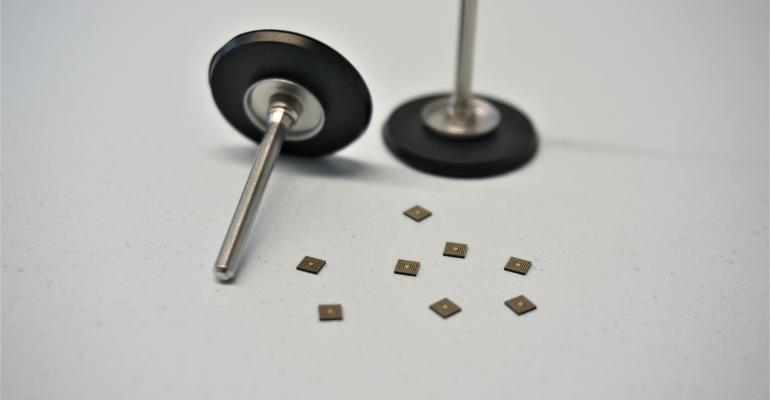Andreas Minatti, head of business development, Jakub Kadlcak, head of materials development and surface technologies mobility, and Rolf Figi, product manager at Datwyler, take a close look at sustainability in the mobility sector and the activities contributing to a greener future at a component level and beyond.
In a report published in March entitled The Automotive Industry in the Era of Sustainability, global consulting firm Capgemini stated that amidst growing concerns around climate change and the degradation of the environment, sustainability has become a strategic priority for mobility organizations globally.
As a result, in order to maintain “valuable partner” status as a supplier it is paramount to incorporate sustainable practices into every possible element of an operation – from the impact production processes have on the environment at the factory level, to the design, material use and functionality of the products produced.
 In the case of component suppliers, in addition to internal processes and procedures, it also is possible to make a tangible impact in terms of the systems within which those components are incorporated.
In the case of component suppliers, in addition to internal processes and procedures, it also is possible to make a tangible impact in terms of the systems within which those components are incorporated.
The electrification of vehicles is a key example, and is an area widely considered to be a crucial driver for increased sustainability within the industry and for global emissions reduction, while delivering components for emission control and emission reduction systems enables existing internal-combustion engines to operate at far cleaner levels.
Electrification
Small components such as seals that incorporate sensor technology will be prevalent in electric vehicles due to their natural affinity with the power source and could contribute to impressive reductions in greenhouse gas emissions in many ways.
By using smart sealing solutions with sensors embedded, for example, the integrity of the seal not only can be ensured, but the ability to monitor a wide range of activities within the vehicle also can be added.
An integrated sensor could monitor or track functionality, for instance, or other elements such as temperature, humidity or leakage – delivering data to the vehicle itself or to the manufacturer or driver that could allow more efficient operation of the vehicle.
Predictive maintenance and predictive analytics also will be possible, as the sensors within certain seals will be able to detect whether parts are wearing or are close to failure, ensuring their replacement can be planned before unscheduled downtime events or even potential safety issues occur.
This active data will be key to realizing the full potential of sensor technology and its impact on sustainability.
ICE Will Not Disappear Overnight
Due to rapidly increasing traffic and stricter regulations, experts predict a growing worldwide demand for exhaust-gas treatment products, especially in emerging markets.
Nitrogen oxide (NOX) limits given by the WLTP and even stricter Super Ultra-Low Emission Vehicle limits for California, for example, continuously pose a major challenge to vehicle manufacturers.
Key technologies for the reduction of NOX are selective catalytic reduction (SCR) systems – considered to be the most efficient and reliable method to reduce more than 90% of NOX emissions of diesel engines and to comply with Euro 6d standards and above.
This technology is particularly important for commercial vehicles, given the high mileage they generally undertake using diesel. There are many markets, such as China, where goods are transported almost exclusively by road and the trucks used to do this are prone to heavy emissions.
SCR systems use water-based urea solutions (AdBlue or Diesel Exhaust Fluid as it is known in the U.S.) as an ammonia source to neutralize NOX in diesel exhaust.
In SCR systems, ammonia reacts selectively with nitrogen oxides, resulting in harmless nitrogen and water.
To guarantee the safe transport of these chemicals from their storage tank to the exhaust system, the SCR technology requires parts that are based on specifically designed elastomer materials (below). These materials are exposed to and attacked by AdBlue.

Choosing suitable elastomer materials that withstand the aggressive urea solution poses a considerable technical challenge for the elastomer.
This applies equally to the elastomer-to-substrate bonding that is often required for AdBlue or DEF applications. SCR systems use complex components with elastomer and elastomer-to-metal/plastic bonded parts, tight tolerances and sophisticated geometries.
Elastomer materials are available in different, tailored compositions covering specific requirements (e.g., temperature flexibility, internal lubricant, fiber reinforcements or diesel resistance), and must be successfully tested in extreme environments at peak temperatures of 248° F (120° C) and 302° F (150° C) to ensure maximum resilience and long life.
Even the smallest components can be greener and more friendly to the environment, and everything possible is being put into place to ensure this is the case.
It has never been more important to look at the bigger picture in terms of a sustainable future for the mobility sector, and by working in a collaborative manner the vehicles of the present and the future can contribute to tangible change at a global level.





